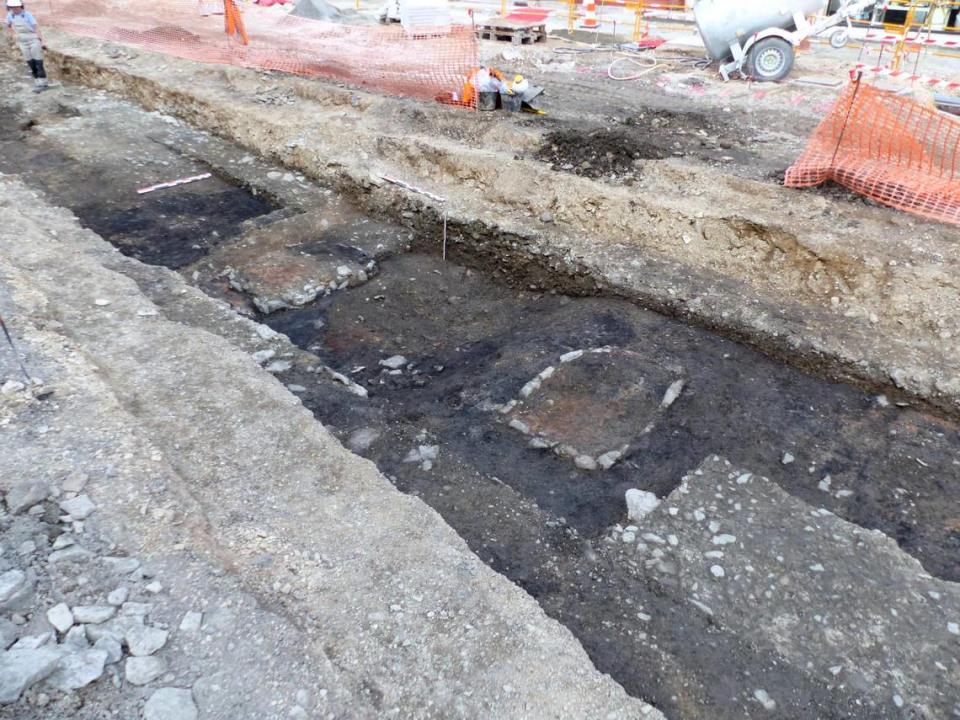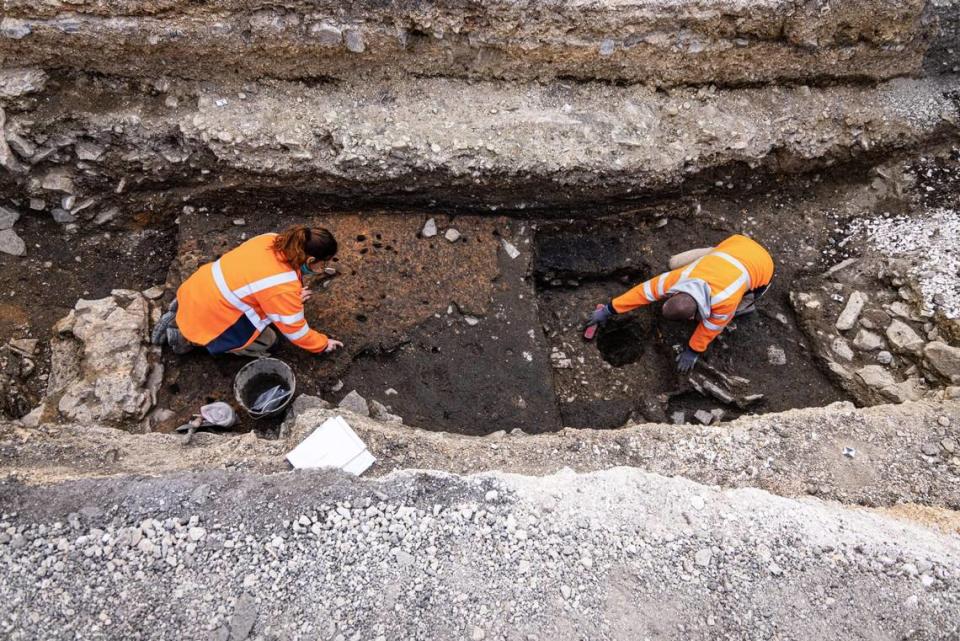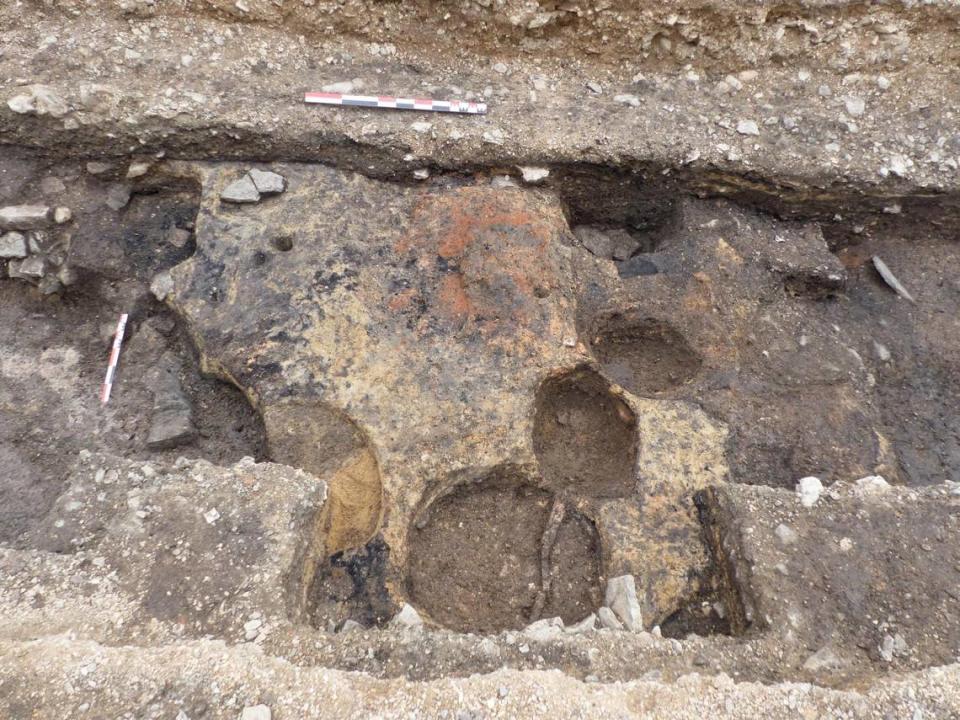Stone workshops — used by craftsmen in the Middle Ages — found in France. See them
In the bustling city center of Dijon, workers lifted the pavement of a square as part of a redevelopment project of the historic area.
Instead of dirt many feet deep, sections of ancient stone were buried just beneath the surface.
In a line of plots, the walls of ancient buildings, about 10 to 15 feet wide, were excavated from the French square, according to an April 29 news release from the Institut National de Recherches Archéologiques Préventives.

Uncover more archaeological finds
What are we learning about the past? Here are three of our most eye-catching archaeology stories from the past week.
→ Massive 2,200-year-old tomb with grand interior unearthed in China
→1,000-year-old weapon — the first of its kind — found sticking out of grave in Spain
→ Workers unearth steelworks at medieval castle in UK — and find someone's 'hidey-hole'
Stretching from north to south, the line of buildings once had walls made of wood with stone and masonry supports, archaeologists said.
They date to the 11th century, according to officials, during the early Middle Ages in France.
The inside of the buildings have different materials, some with clay soil and others with charcoal deposits, and throughout the buildings, fireplaces were in various stages of construction, according to the release.
Some of the hearths were very large and built from stone, while others may have been rejects from oven vaults, the researchers said.
Along the buildings, pits with stake holes suggest each plot belonged to an artisanal workshop, where the craftsman of the day could work on their projects, according to the release.

The site is very close to an ancient cemetery that was discovered on the other end of the square, surrounding the powerful abbey of Saint-Bénigne, the archaeologists said.
It suggests that the line of buildings was part of the “town” that once stood at the foot of the symbol of power, according to the release.
The “town” is cited multiple times in historical documents between the 9th and 11th centuries and may have been in use as late as the 14th century, archaeologists said.

Dijon is in eastern France, about a 200-mile drive southeast from Paris.
Google Translate was used to translate the news release from the Institut National de Recherches Archéologiques Préventives.
Archaeological site robbery report leads to ancient discoveries in Peru, officials say
Medieval pottery workshop — with pieces still in the oven — found in France. See it
Rare collection of centuries-old fabric and shoes discovered in Poland. Take a look
Two ancient women buried together in Austria in first of its kind find. ‘Remarkable’

